The Group/Society of Things/Take a Break and Go Ahead/The Golden Age of Kommagene
2016,
installation,
concrete, sand, fabric, polystyrene, wood, plaster, spray paint, deckchair, inject print on paper,
digital print on PVC, glass, triops granarius, triops cancriformis beni-kabuto ebi,
dimensions variable
Installation views Orientations in Time and Space @ stay hungry, Berlin
The installation The Group/Society of Things/Take a Break and Go Ahead/The Golden Age of Kommagene deals with the transformation of the relation between people and objects. The fundamental aspect of this work is the intensive examination of the variable meaning of objects and things and their formal and content-related shifting in the context of different cultural backgrounds. The basis for these investigations is an extensive collection and archive of objects and objects from various sources that the artist has been building for nearly two decades. In this work, the physical objects are subjected to a transformative change in that through their imprint in a clay form and the subsequent pouring with pigmented cement, positives are created in which the objects lose both their original materiality and colourfulness as well as their previous context. The objects, which existed before as individual pieces, are frozen to each other in an immovable state by the fixation in concrete and thus elude the possibility of being read as individual parts. The conglomerate, the parataxis of the individual objects, contains as a temporal component the simultaneity of the real object and its imprint in a form of plate or panel reminiscent of archaeological excavation pieces.
A second starting point of the work is the critical questioning of the museum and institutional practice of collecting, cataloguing and presenting cultural assets in ethnological, archaeological and ethnological museums and collections. In most cases, the aim is to reproduce the meanings of objects as authentically as possible, without being able to comprehensively do justice to their flexible and diverse cultural and individual possibilities of contextualization.
In The Group/Society of Things/Take a Break and Go Ahead/The Golden Age of Kommagene, the combination of these two focal points of object interpretation and critical examination of museum presentation and interpretation forms of objects manifests itself in the personalization of the exhibited plates as stereotypical, eternal human types: The Artist, The Philosopher, The Explorer and The Scientist.
Those stereotypes rest on different seatings and look at a large photograph of a desert plain in Morocco. This landscape depiction refers specifically to the presentation of dioramas in ethnological collections that often depict scenes and objects from the life of a particular ethnic group against the backdrop of a landscape image. In contrast to the three other plates, The Scientist consists of an open-work concrete slab in which an aquarium with another plate is embedded with a cast of one hand. It contains two different species of triops crayfish, triops granarius and triops cancriformis beni-kabuto ebi. This species belongs to the group of gillfoots and is one of the oldest species that has been present on earth uninterruptedly for 220 million years. Thus one finds both the fossil petrified specimens and their living descendants in anatomically unchanged form. The special thing about this species is that they actually originate from rather dry areas and only come to life during temporary flooding caused by heavy rainfall. The permanent eggs are absolutely resistant to drought and cold and can lie in the ground for decades before being brought back to life by the water.
A last component is an information board entitled with Parataxis of Everything, that is placed on a blue fabric background and that reminds by its design of explanatory or information boards from the museum context. But instead of a text, one finds a sequence of different objects. On the one hand, this panel refers to the isolated meaning of the individual object itself and at the same time shows its mutual relationship, from which new contexts of meaning can emerge.
http://stayhungry-projectspace.de/orientations/
*deutsche Version unten
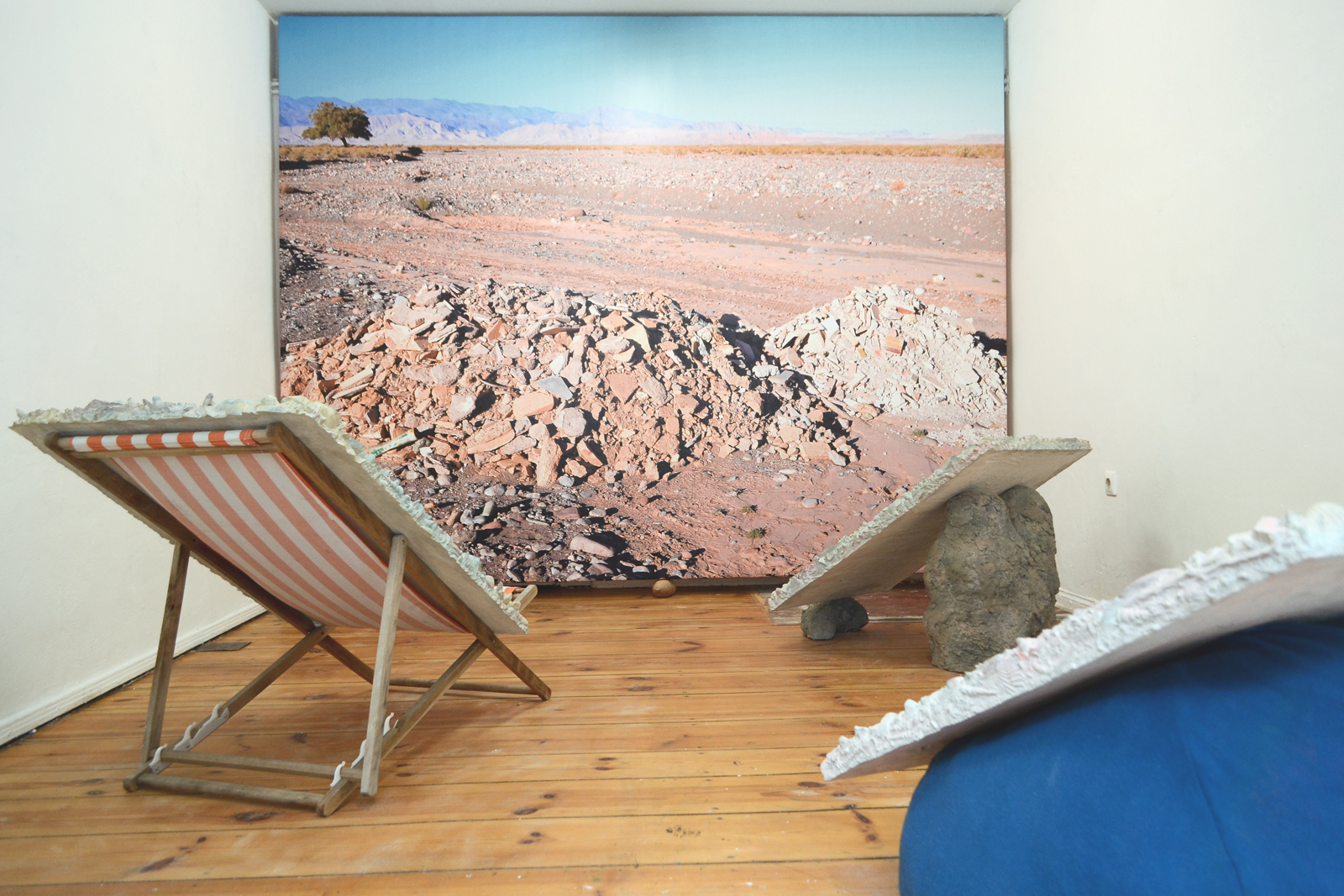
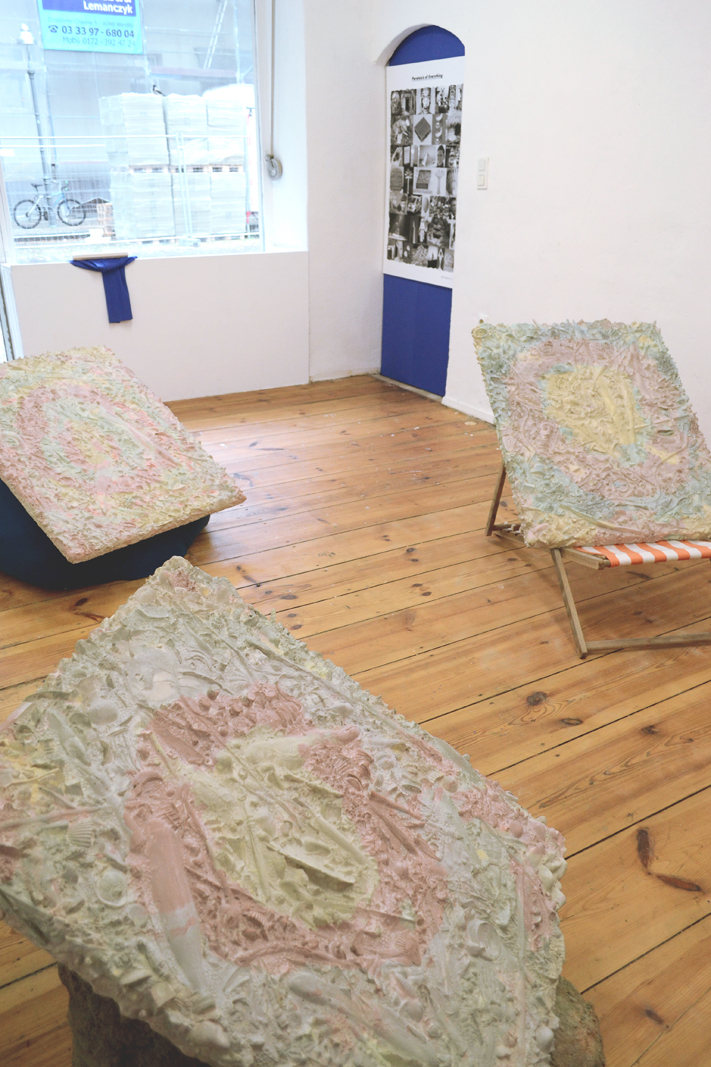

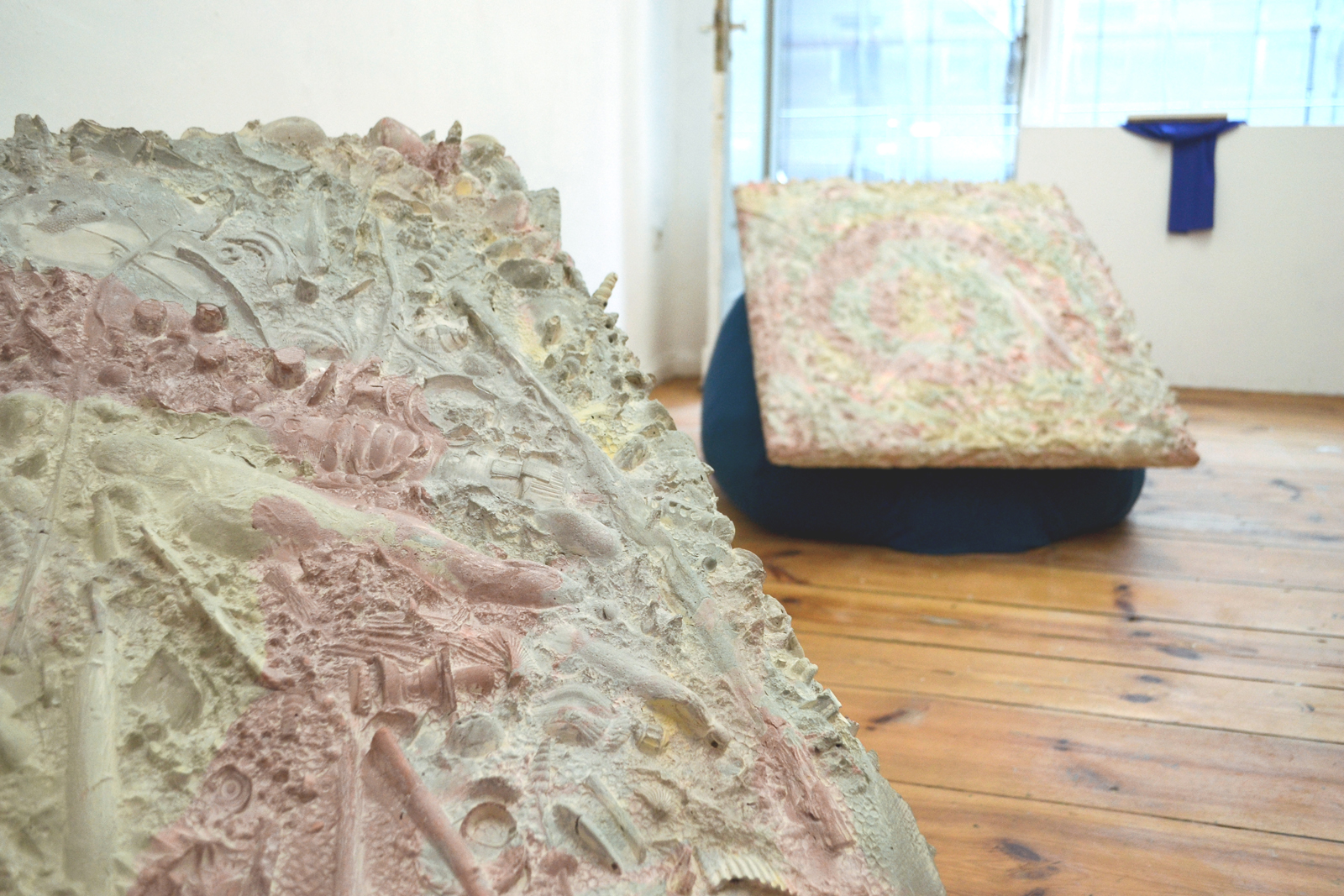
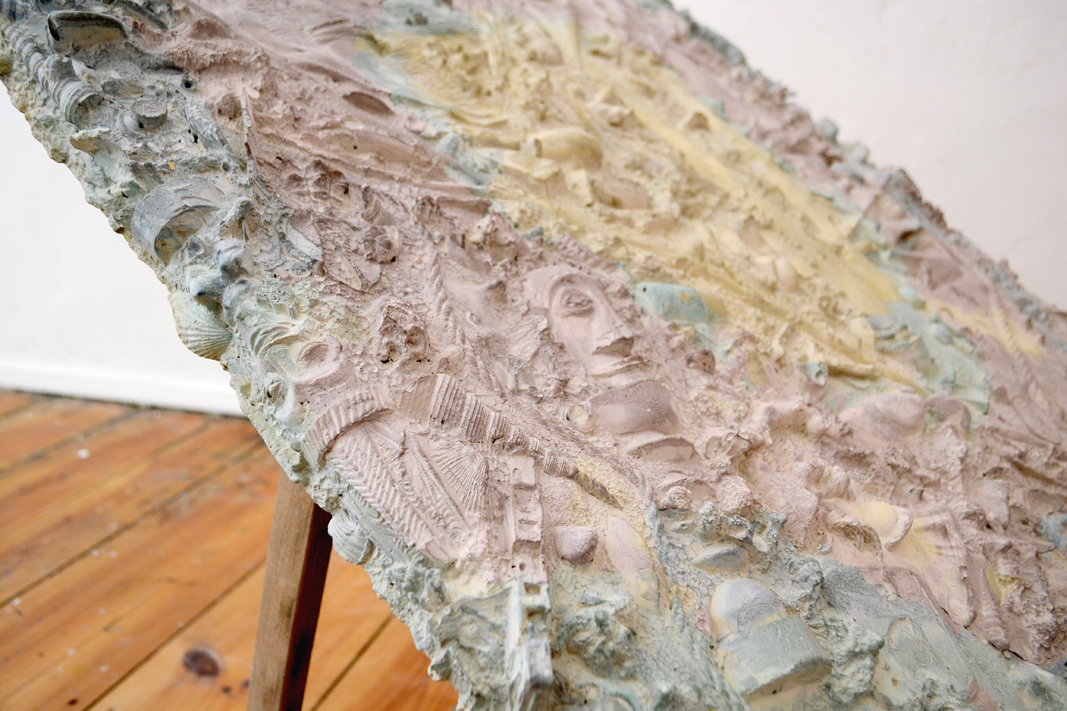
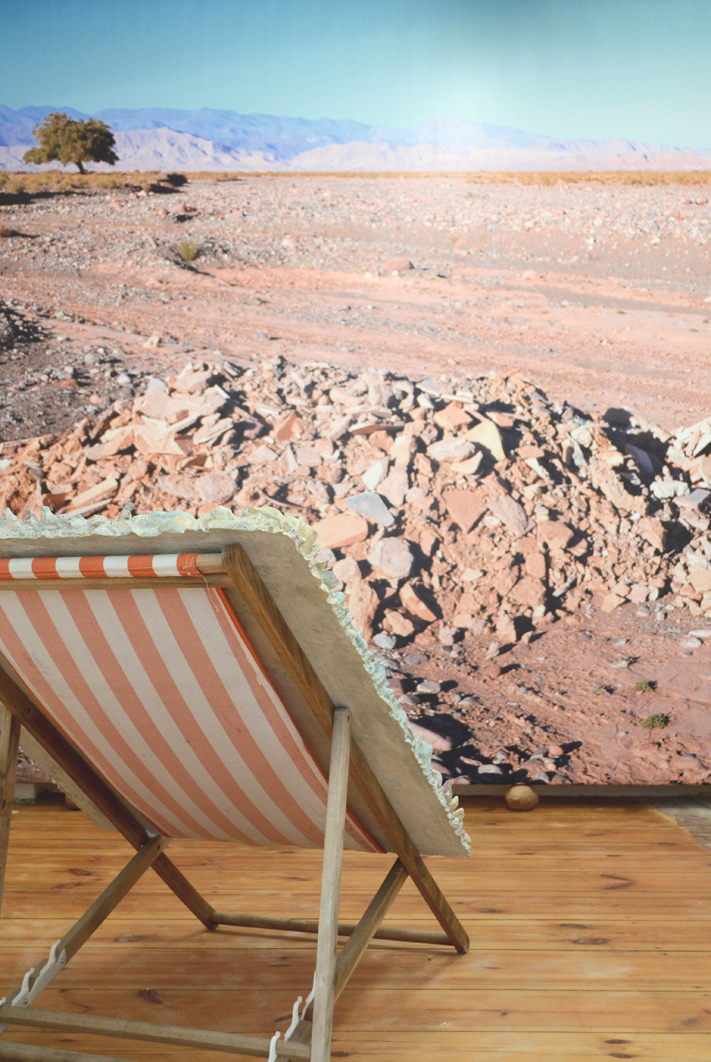

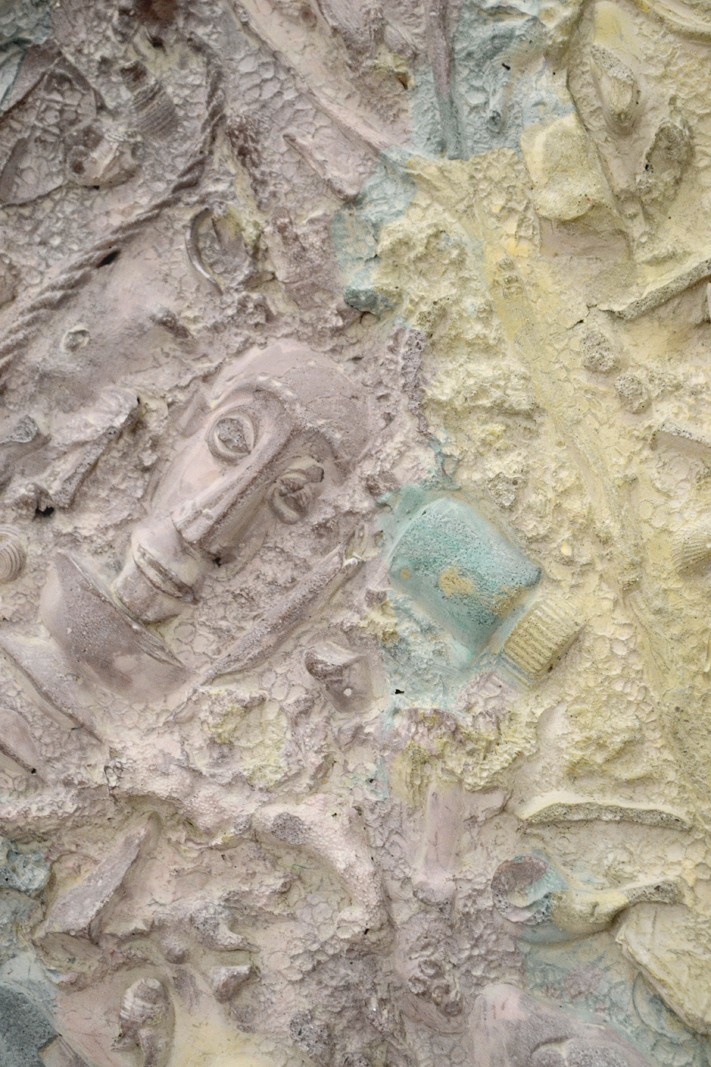
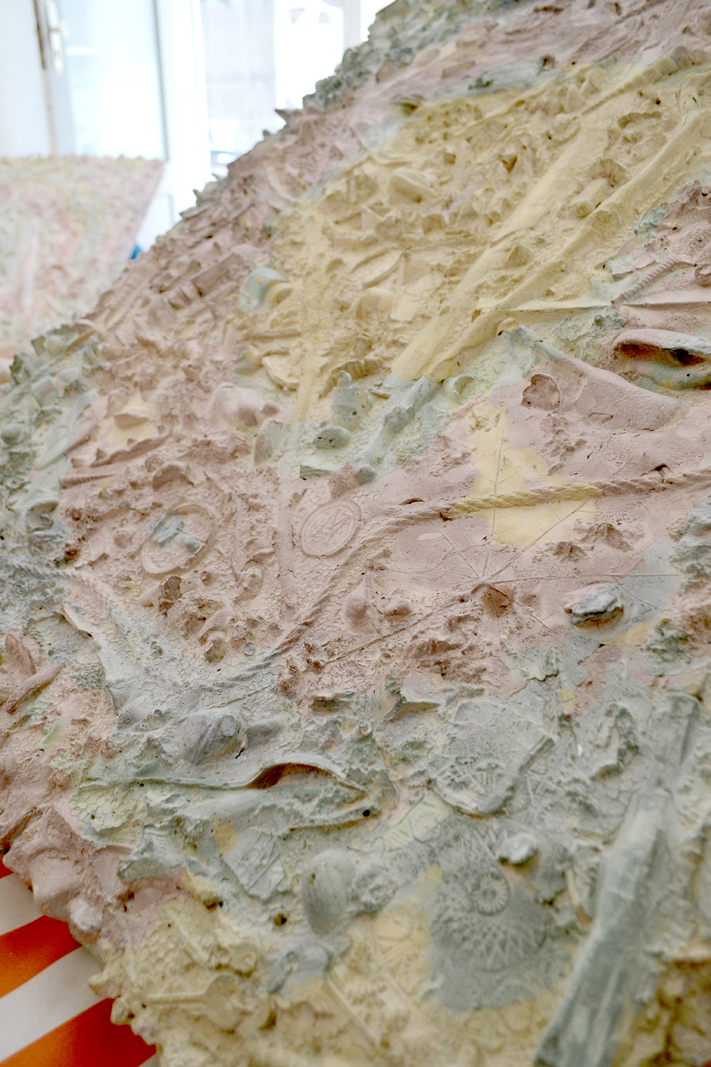
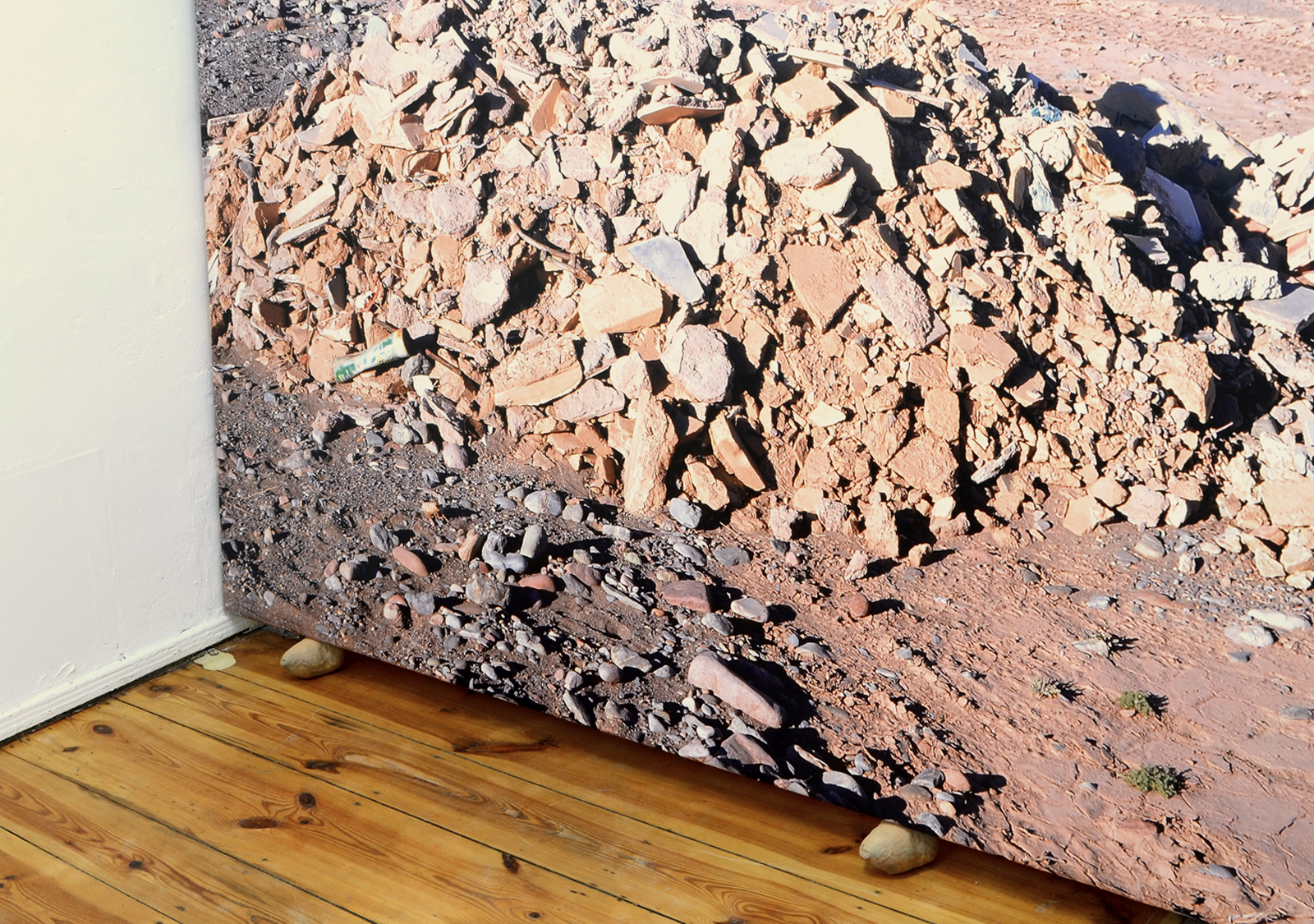
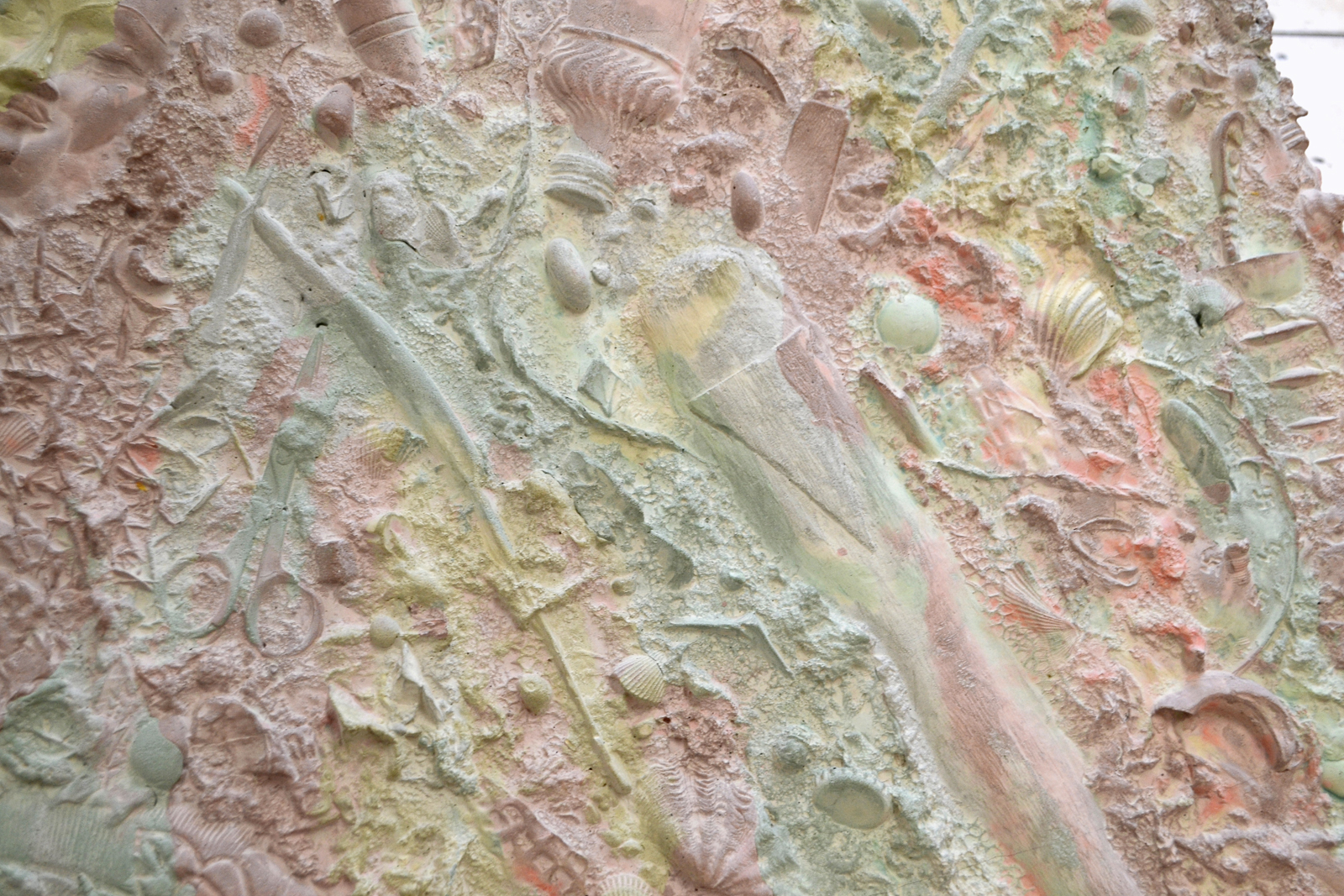
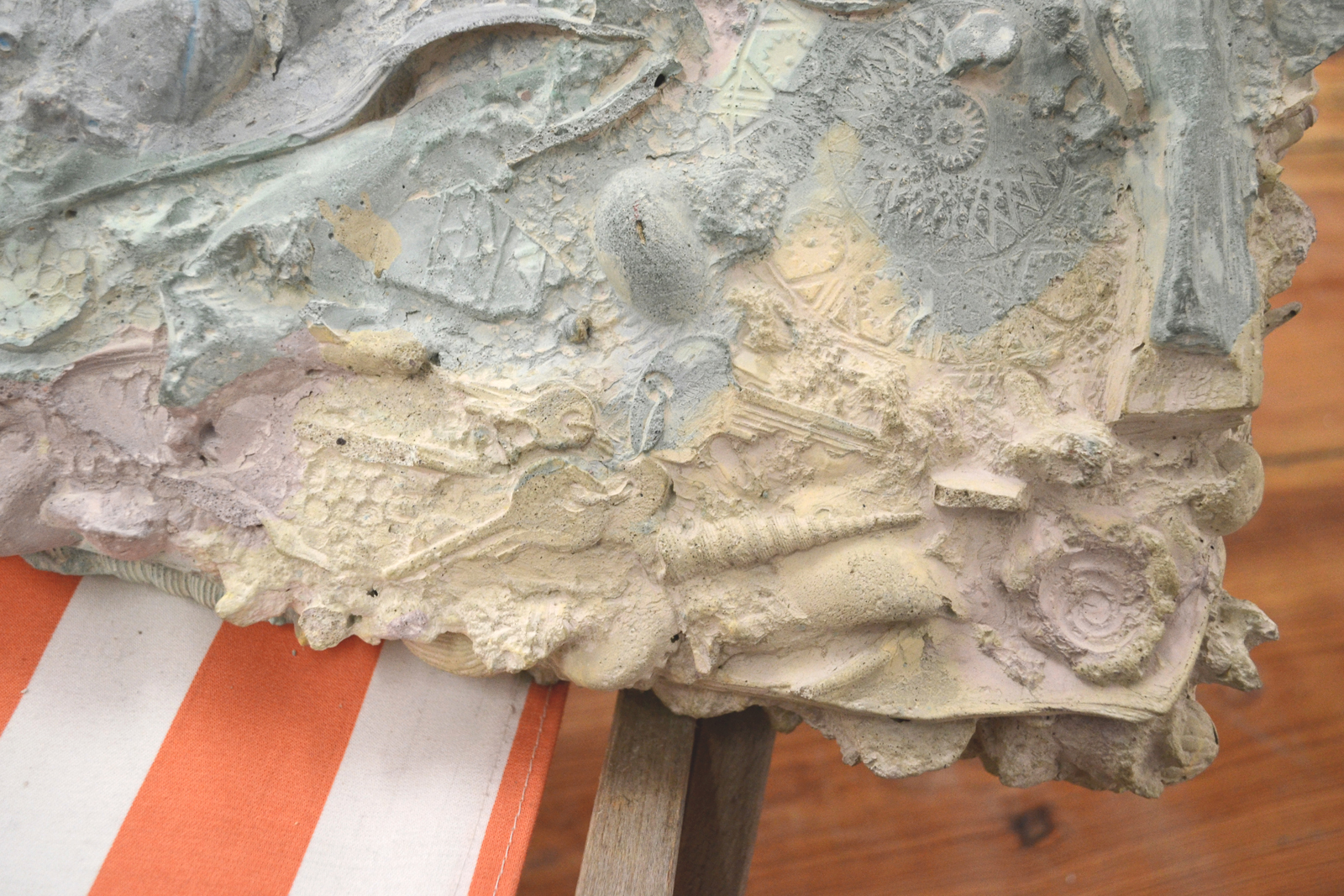
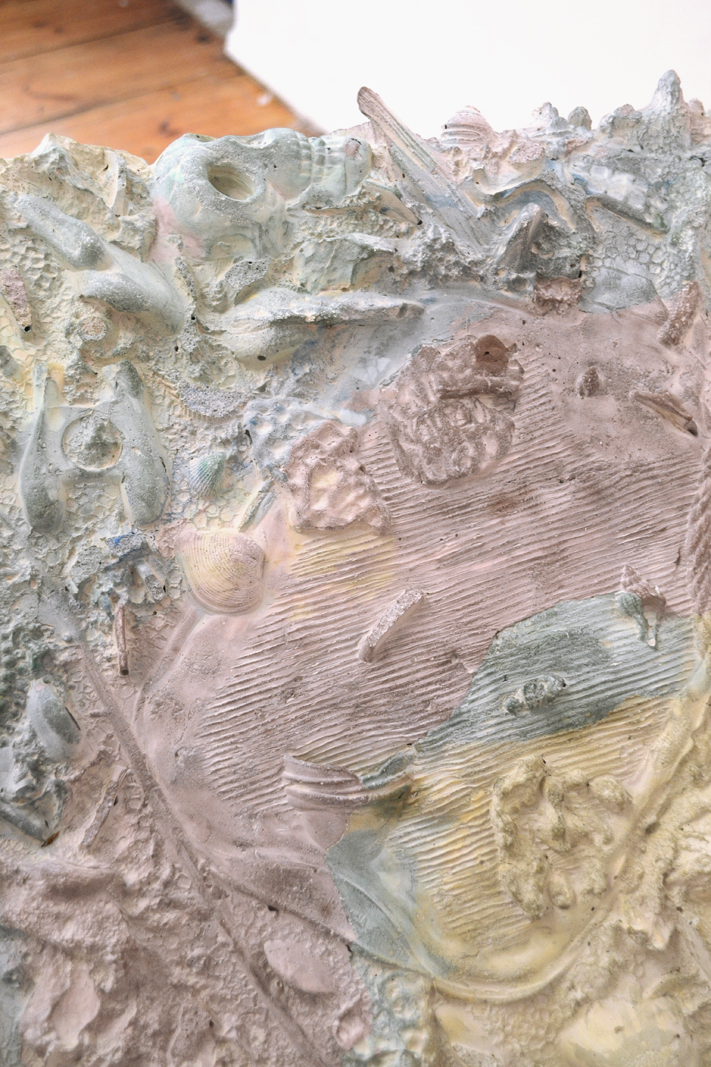
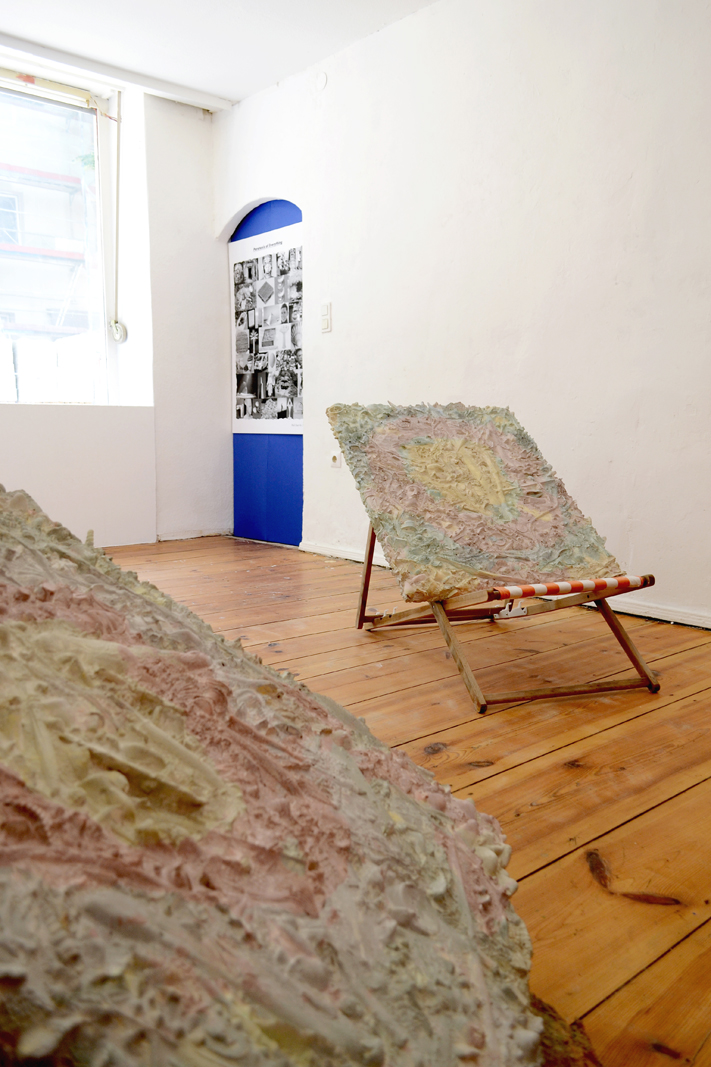
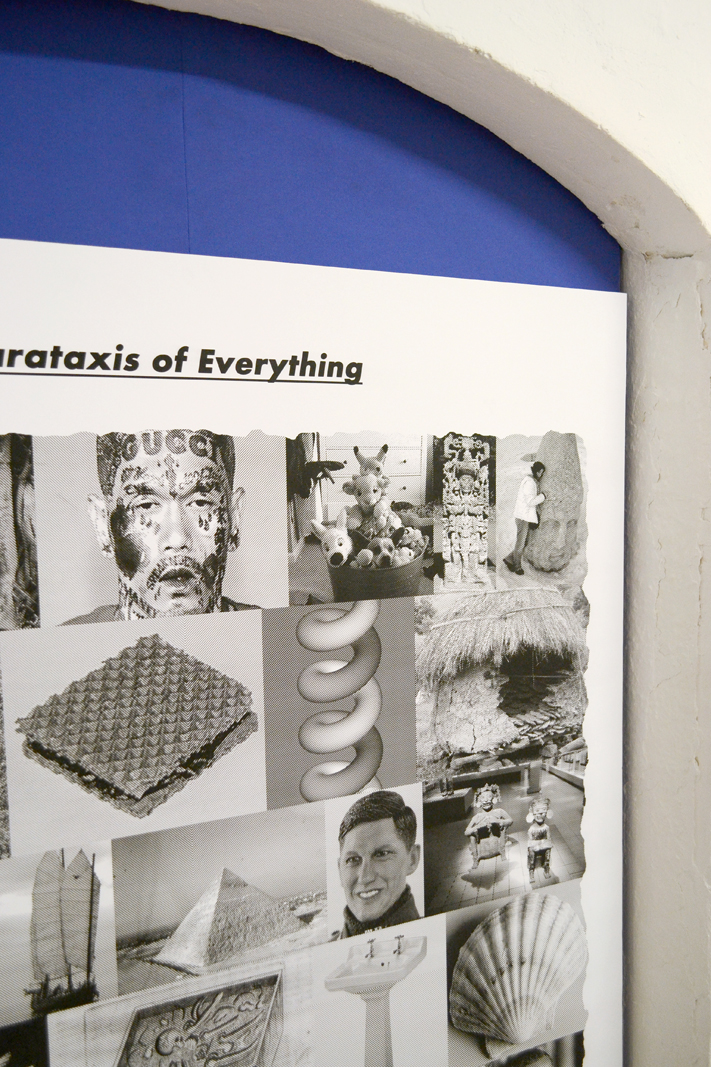
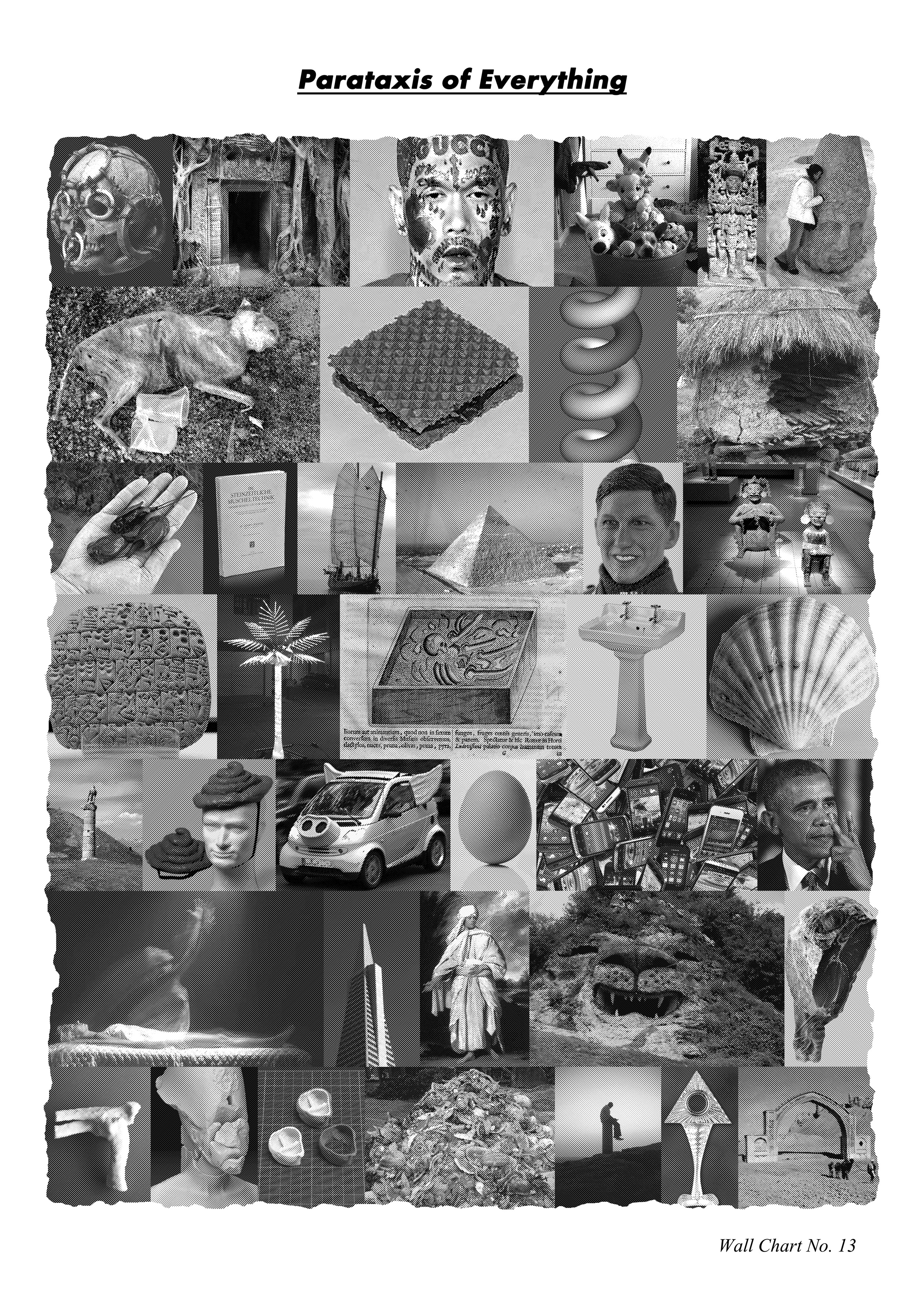
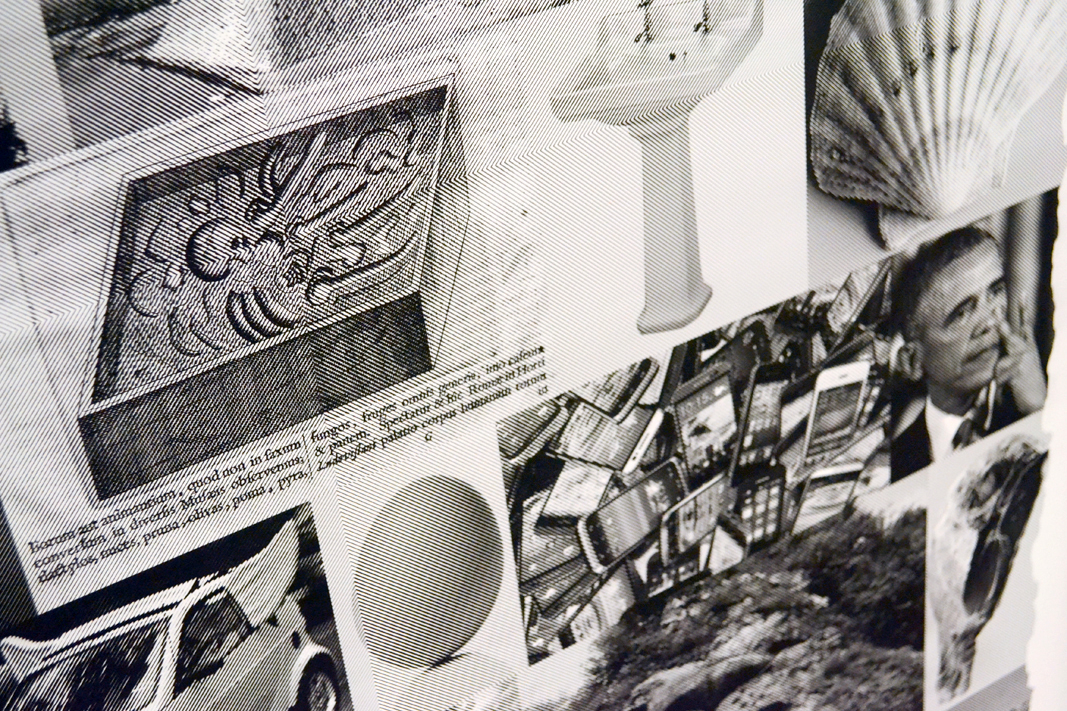
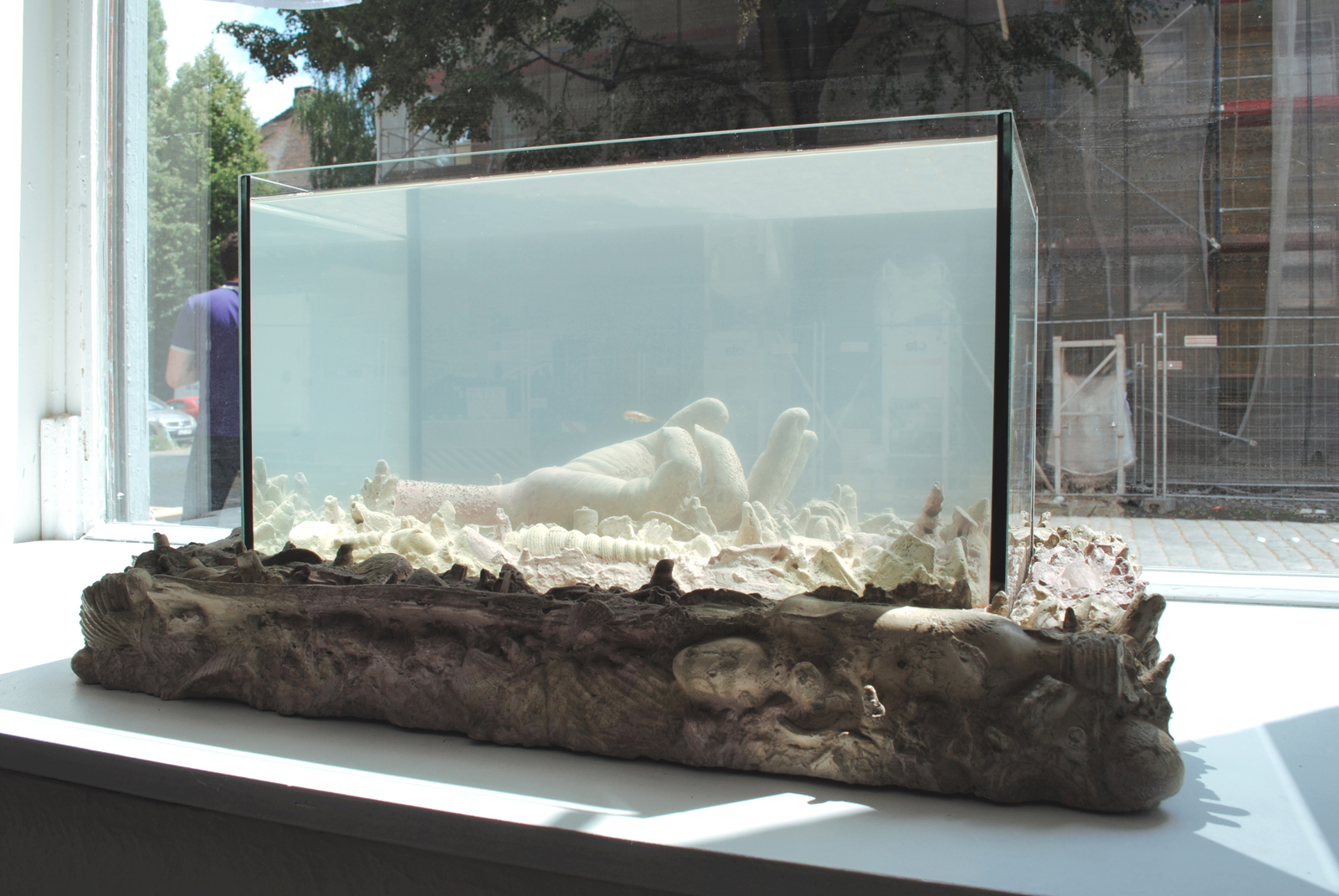
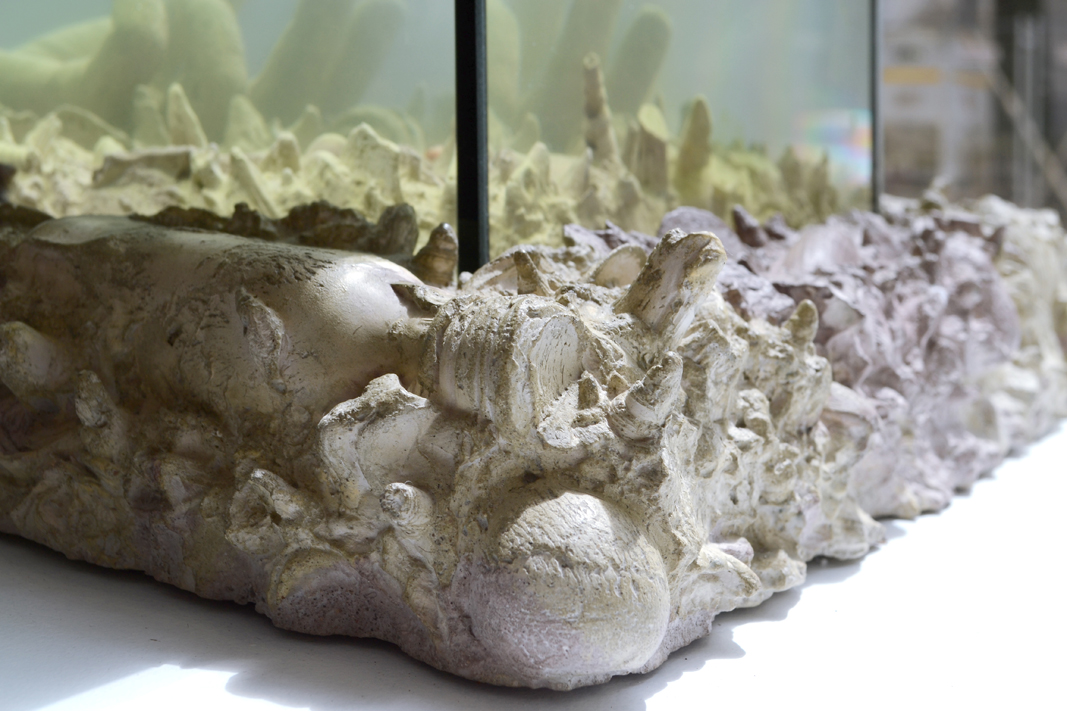
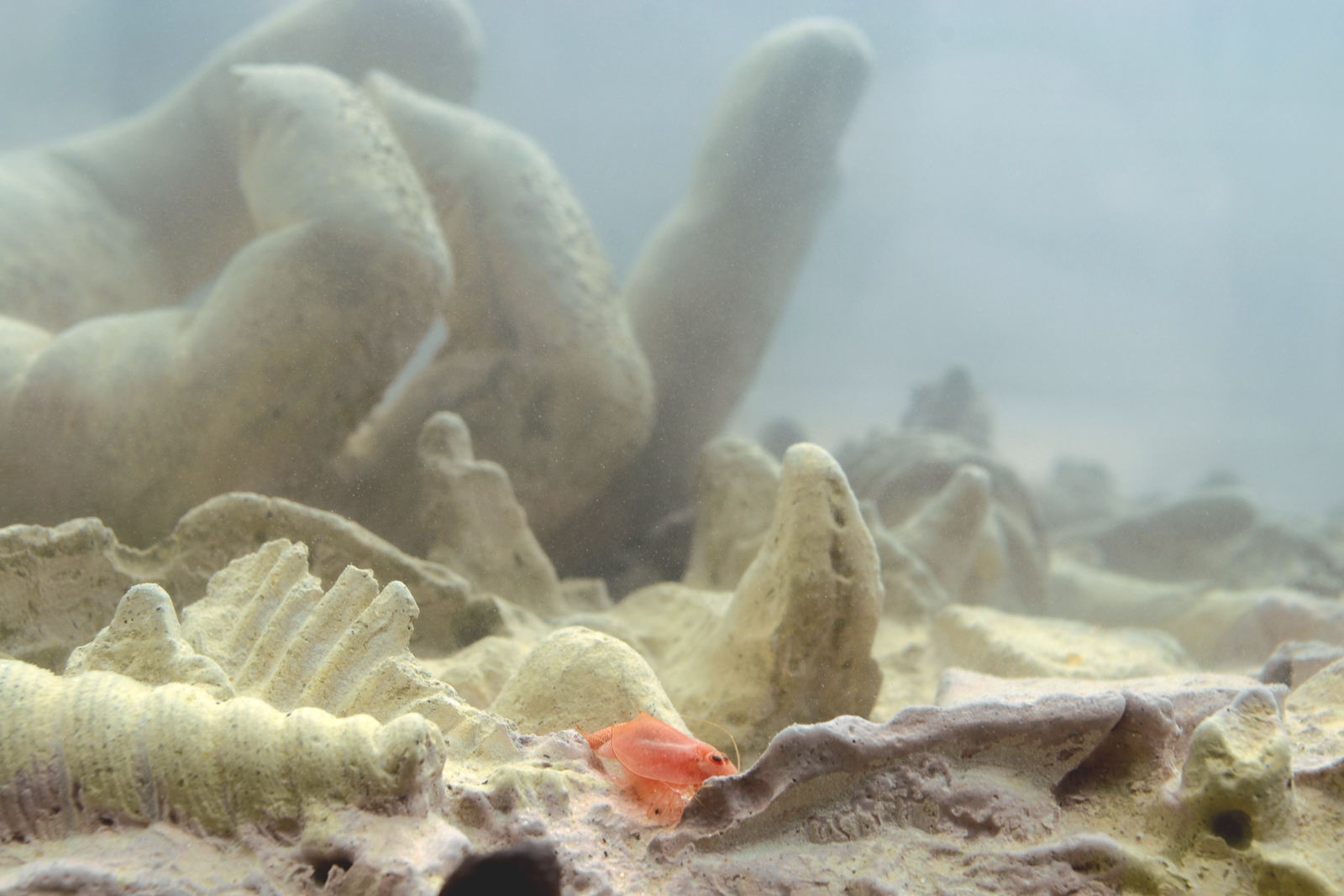
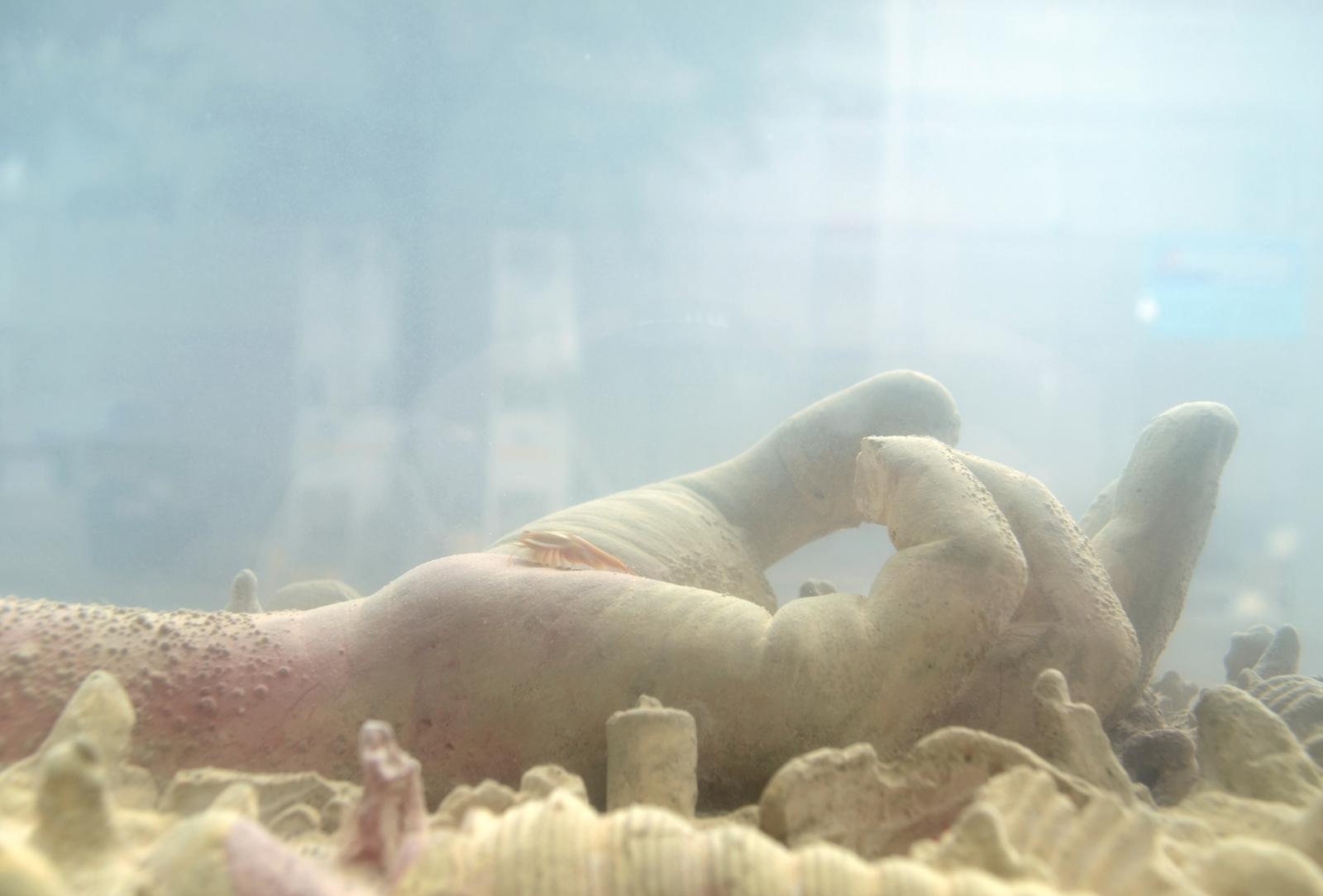
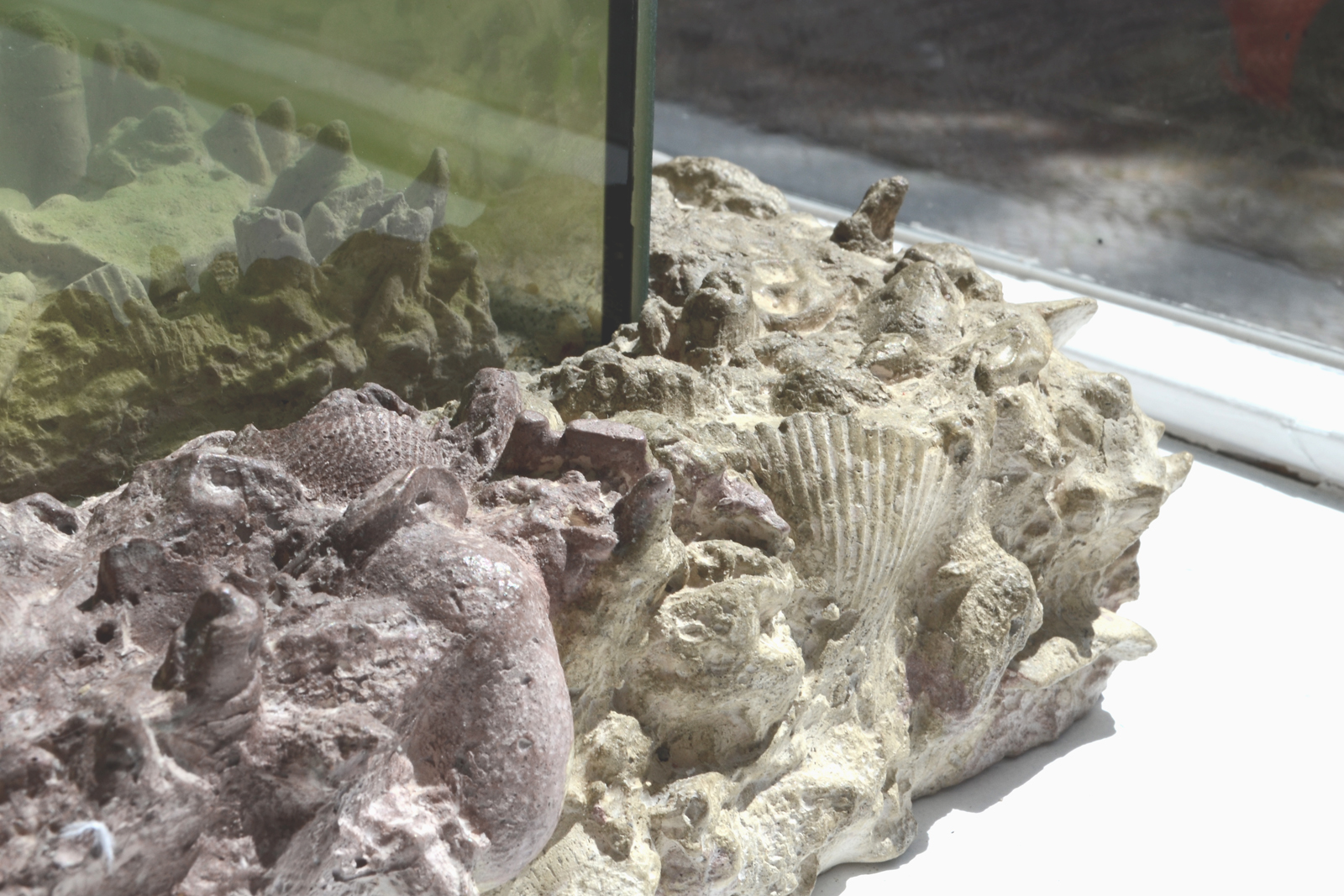
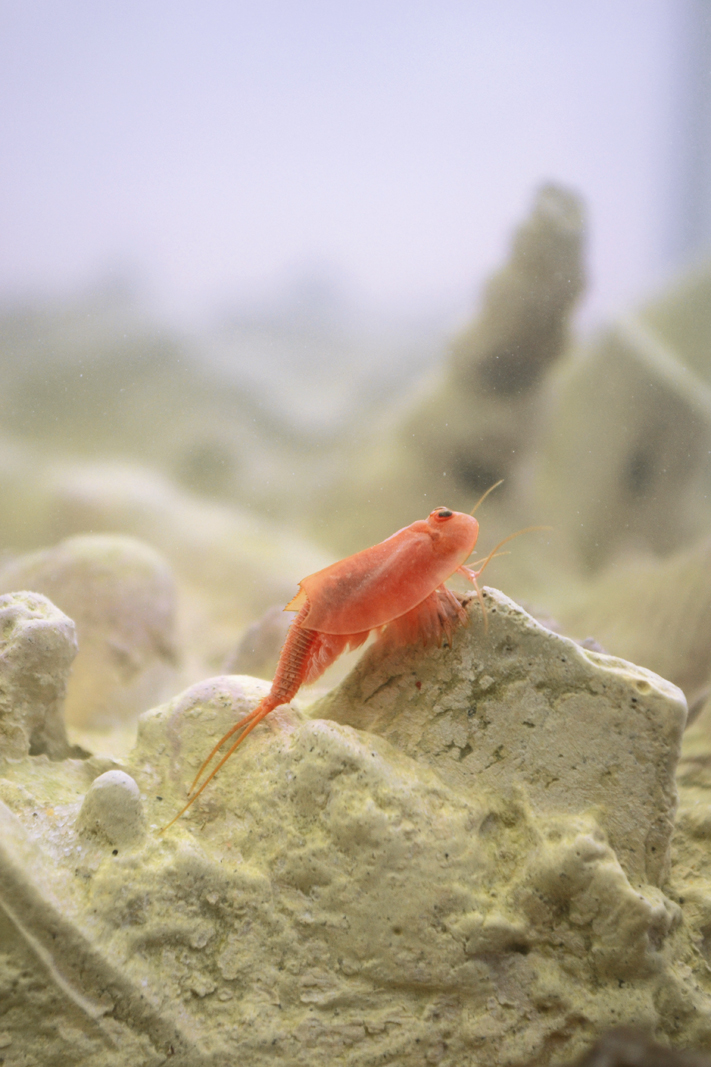
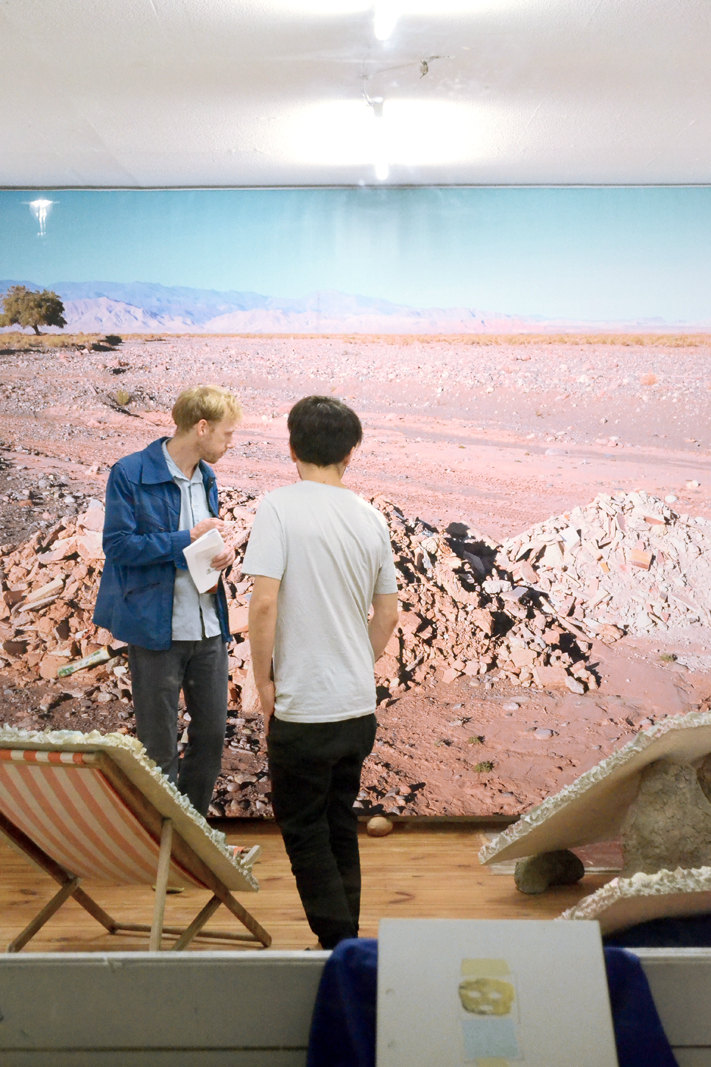
2016, Installation,
Zement, Sand, Stoff, Styropor, Holz, Gips, Sprühlack, Liegestuhl, Injekt Druck auf Papier,
Digitaldruck auf PVC, Glas, triops granarius, triops cancriformis beni-kabuto ebi
Teil der Doppelausstellung Orientations in Time and Space, 2016, in Zusammenarbeit mit Meike Kuhnert
Die Installation The Group/Society of Things/Take a Break and Go Ahead/The Golden Age of Kommagene beschäftigt sich mit der Transformation der Relation zwischen Menschen und Objekten. Grundlegend bei dieser Arbeit ist die intensive Auseinandersetzung mit der variablen Bedeutung von Objekten und Dingen und deren formaler und inhaltlicher Verschiebung im Kontext unterschiedlicher kultureller Hintergründe. Die Basis für diese Untersuchungen bildet eine umfangreiche, seit zwei Jahrzehnten vom Künstler angelegte Sammlung und Archiv von Gegenständen und Objekten aus unterschiedlichen Bezugsquellen.
Die physikalischen Objekte werden in dieser Arbeit einer transformativen Veränderung unterzogen, indem durch deren Abdruck in eine Tonform und die anschließende Ausgießung mit pigmentiertem Zement, Positive entstehen, bei denen die Gegenstände sowohl ihre ursprüngliche Materialität und Farbigkeit als auch ihren vorherigen Kontext verlieren. Die Objekte, die vorher als Einzelstücke existierten, werden durch die Fixierung in Beton in einem unverrückbaren Zustand zueinander festgefroren und entziehen sich so der Möglichkeit als einzelne Teile gelesen zu werden. Das Konglomerat, die Parataxe der einzelnen Gegenstände, beinhaltet als zeitliche Komponente die Gleichzeitigkeit des echten Objekts und deren Abdruck in einer an archäologische Ausgrabungsstücke erinnernden Form der Platte oder Tafel. Ein zweiter Ansatzpunkt der Arbeit ist die kritische Hinterfragung der musealen und institutionellen Museumspraxis des Sammelns, Katalogisierens und Präsentierens von Kulturgütern in ethnologischen, archäologischen und völkerkundlichen Museen. Dabei wird meist versucht, die Bedeutungen von Gegenständen und Objekten so authentisch wie möglich wiederzugeben, ohne deren flexiblen und vielfältigen kulturellen und individuellen Kontextualisierungsmöglichkeiten umfassend gerecht werden zu können. Die Zusammenführung dieser beiden Schwerpunkte von Objektinterpretation und kritischer Auseinandersetzung mit musealen Präsentations- und Interpretationsformen von Objekten manifestiert sich bei The Group/Society of Things/Take a Break and Go Ahead/The Golden Age of Kommagene in der Personalisierung der ausgestellten Platten als stereotype, ewige Menschentypen: The Artist, The Philosopher, The Explorer und The Scientist. Diese sitzen auf unterschiedlichen Sitzgelegenheiten und schauen auf eine große Fotografie einer Wüstenebene in Marokko. Diese Landschaftdarstellung bezieht sich konkret auf die Präsentation von Dioramen in ethnologischen Sammlungen, die vor dem Hintergrund einer Landschafts-abbildung oft Szenerien und Gegenstände aus dem Leben einer bestimmten Ethnie darstellen. Die Arbeit The Scientist besteht im Kontrast zu den drei anderen Platten aus einer durchbrochenen Betonpaltte in die ein Aquarium mit einer weiteren Platte mit einem Abguss einer Hand eingelassen ist. Darin leben zwei verschiedene Arten von sog. Triopskrebsen, triops granarius und triops cancriformis beni-kabuto ebi. Diese Art aus der Gruppe der Kiemenfüsser zählt zu den ältesten Spezies, die seit 220 Millionen Jahren ununterbrochen auf der Erde vorkommen. Somit findet man sowohl die fossile versteinerte Exemplare als auch deren lebende Nachfahren in anatomisch unveränderter Form. Das besondere an dieser Spezies ist, dass diese eigentlich aus eher trockenen Gebieten stammen und nur bei temporären Überschwemmung durch Starkregen zum Leben erwachen. Die Dauereier sind absolut resistent gegen Trockenheit und Kälte und können jahrzehntelang im Boden liegen ehe sie durch das Wasser wieder zum Leben erweckt werden. Ein letzter Bestandteil ist eine auf blauem Stoffhintergrund hängende Informationstafel Parataxis of Everything, die durch ihre Machart an Erklärungs- oder Informationstafeln aus dem musealen Kontext erinnert. Doch statt eines Textes findet man eine Auf- und Aneinanderreihung von unterschiedlichen Gegenständen. Diese Tafel verweist einerseits auf die isolierte Bedeutung des einzelnen Gegenstandes selbst und zeigt gleichzeitig deren wechselseitige Beziehung, aus der sich neue Sinnzusammenhänge ergeben können.
